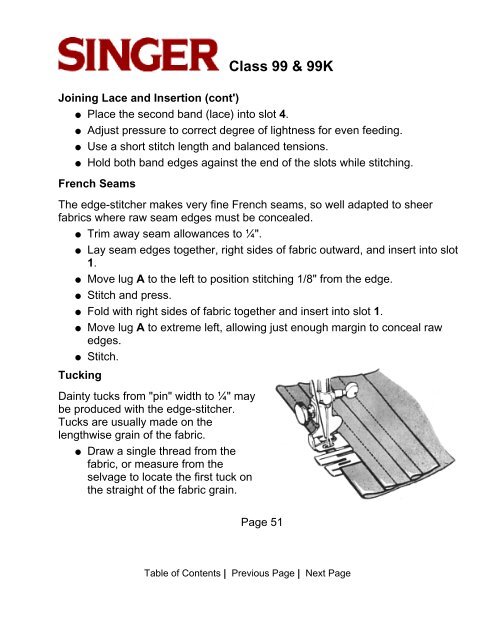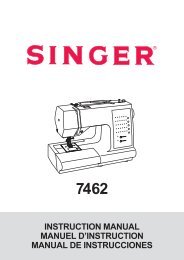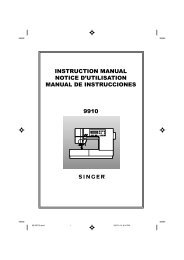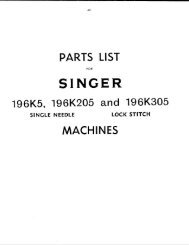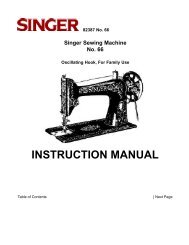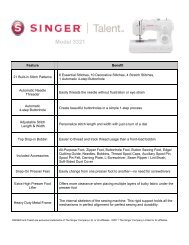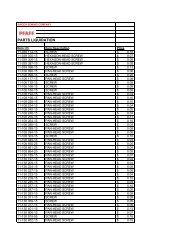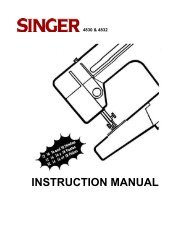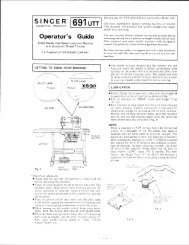Class 99 & 99K Sewing Machines - Sew-Classic.com
Class 99 & 99K Sewing Machines - Sew-Classic.com
Class 99 & 99K Sewing Machines - Sew-Classic.com
Create successful ePaper yourself
Turn your PDF publications into a flip-book with our unique Google optimized e-Paper software.
<strong>Class</strong> <strong>99</strong> & <strong>99</strong>K<br />
Joining Lace and Insertion (cont')<br />
● Place the second band (lace) into slot 4.<br />
● Adjust pressure to correct degree of lightness for even feeding.<br />
● Use a short stitch length and balanced tensions.<br />
● Hold both band edges against the end of the slots while stitching.<br />
French Seams<br />
The edge-stitcher makes very fine French seams, so well adapted to sheer<br />
fabrics where raw seam edges must be concealed.<br />
● Trim away seam allowances to ¼".<br />
● Lay seam edges together, right sides of fabric outward, and insert into slot<br />
1.<br />
● Move lug A to the left to position stitching 1/8" from the edge.<br />
● Stitch and press.<br />
● Fold with right sides of fabric together and insert into slot 1.<br />
● Move lug A to extreme left, allowing just enough margin to conceal raw<br />
edges.<br />
● Stitch.<br />
Tucking<br />
Dainty tucks from "pin" width to ¼" may<br />
be produced with the edge-stitcher.<br />
Tucks are usually made on the<br />
lengthwise grain of the fabric.<br />
● Draw a single thread from the<br />
fabric, or measure from the<br />
selvage to locate the first tuck on<br />
the straight of the fabric grain.<br />
Page 51<br />
Table of Contents | Previous Page | Next Page


